The evolution of Queen Organology during their career
During their long career (started in 1970 and ended in 1995), the English rock band Queen published 15 studio albums and played in concert at least 704 times, performing live 58% of their entire album catalogue, following the data gathered by Queen archivist Greg Brooks.
The original line-up of the band consists of four members: Freddie Mercury (singer and keyboards), Brian May (guitars), John Deacon (bass guitars), Roger Taylor (drums and percussions). It is remarkable to say that all of them were music writers and multi-instrumentalist.
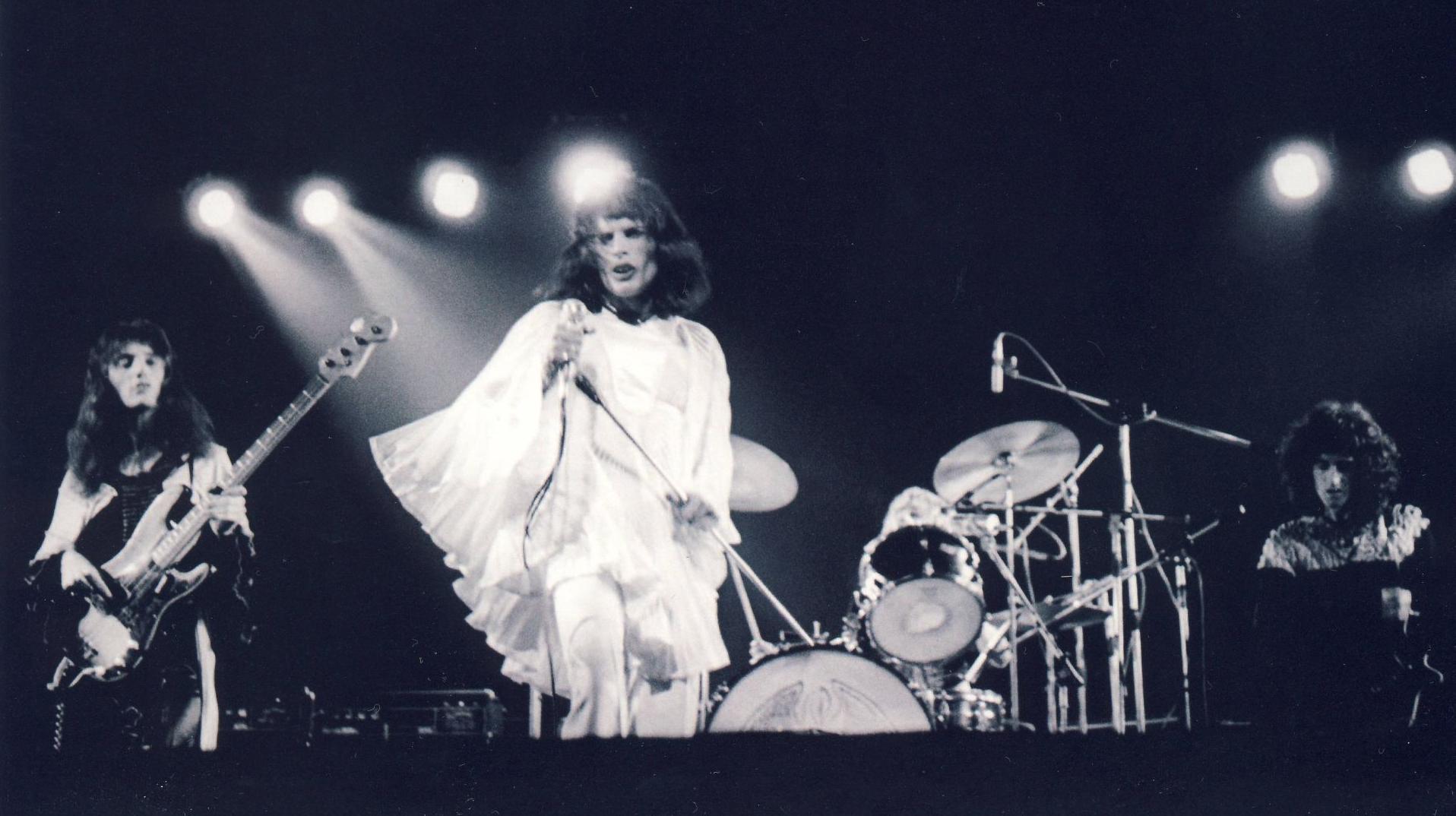
Analysing Queen production is then possible to suggest at least 4 distinct periods in which the discography could be divided, and in which a common artistic sensibility and the look for a coherent musical message is clear:
• Period I (1973–1976); including the albums “QUEEN”, “QUEEN II”, “SHEER HEART ATTACK”, “A NIGHT AT THE OPERA”, “A DAY AT THE RACES”. In these years, the sound of the band becomes unique losing the previous influences and looking for a unique expression. In a few years great LPs (including a concept album) and wonderful songs are recorded in a manner that will not be replied in the following years, because the creativity and the spontaneity permeate each aspect of the production even with some traces of immaturity.
The organology consists of classical set for a rock band (including May’s hand-built guitar called “Red Special”), with some curious and uncommon instruments for this kind of music. The band most likely used the same basic equipment for the first two albums, with the addition of Hairfred, Ovation and Martin acoustic guitars, Bechstein piano, Goff harpsichord, Hammond C-3 organ and an unknown honky-tonk piano, none of which was used on stage of course for practical reasons (since the band in those years didn’t own many instruments).
For the “I Do Like to Be Beside the Seaside” bit that can be found at the end of Seven Seas Of Rhye, the producer Roy Baker played a Dubreq Stylophone, which is technically a synthesiser even if not conceived like similar instruments of that era, but it is noticeable as the first use of electronic gear in a Queen recording.
In these period there is a huge use of acoustic pianos during studio sessions with several models available for the band depending on the recording venue: Yamaha C-7, Bösendorfer 225, Bechstein III and Bechstein D; Mercury used the white Bechstein IV piano for the rehearsals and possibly for most of the recordings as well of the “A NIGHT AT THE OPERA” album. Deacon played Wurlitzer EP-200 electric piano on You’re My Best Friend (although Mercury didn’t like its sound) and he might have used a celeste too for the bell-like overdubs.
May possibly used the Birch guitar for at least some of the overdubs on The Prophet’s Song, on which he also played a Tokai Hummingbird six-string acoustic. The twelve-string acoustic May played on ‘39 is most likely an Ovation Pacemaker 1615. A Vox electric piano is used in the song Teo Torriatte. In these albums, Queen proudly stated on liner notes “Nobody played synthesizers” to underline that their research for a unique sound was direct and performed exclusively with guitars and other analogue studio techniques.
The concert at Golders Green Hippodome in London (recorded on 13th September 1973) was later broadcasted on BBC, and the speaker rightly said:
The Record reviewers remarked on the tasteful synthesizers sound on Queen recordings. But thet got it wrong, because Queen never used synthesizers in the studio or on stage: the answer [for that peculiar sound] is a very special guitar that was built entirely by hand by Brian May […] and that gives Queen a very distictive sound.
(Queen. “On Air”. CD 3. Virgin Records, 2016)
The drummer Taylor declared in an interview several years later the same point of view, giving to the guitars all the special effects:
On the first album, Brian [May] did a lot of stuff on guitar featuring specific harmony guitars, which was a fairly new thing at the time. And a lot of reviewers in England […] said “Great use of synthesizers here!” and of course it was all guitar, and that got up our noses quite a lot… We were a bit put off by the early synthesizers and decided we would actually say from then on – for the next 4 albums or so – that we had no synthesizers on them.
(Queen. The Making Of Plus 30th Anniversary DVD Edition of “A Night At The Opera”. DVD 2. Eagle Vision Classic Albums, 2005)
This is unusual from what other groups did in the same years: for example, the Pink Floyd use of synths and other keyboards was far more different and denote a more experimental research in sound’s landscapes.
• Period II (1977–1980); including the albums “NEWS OF THE WORLD”, “JAZZ”, “THE GAME”, “FLASH GORDON”. Mercury and the other members of the group change musical direction during the punk years, and decide to explore new sonorities with the use of an Oberheim OB-X synthesizer starting from “THE GAME” album. The use of such electronic devices is a turning point in Queen discography: it is true that many pop and rock groups in these years used synths in their songs, but for Queen their use is remarkable because in the first albums it was clearly stated that they didn’t use them.

This was underlined for two main reasons: first they want to give to the guitars all the peculiar sound (and not give credit to electronic devices), and then they want to underline that synths in the beginning of the 70’s were not so versatile despite the popularity of the Moog models (never used anyway by the band). But a decade later things changed drastically and the development of electronic devices permitted an easier interface for program them and mostly a higher polyphony that helped to create more complex pads and musical layers.
Synths appears in these years in studio sessions and during live performances and will never leave the setup, although their use will change during the various periods, starting with some musical “special” effects to a more distinctive sound. This kind of instruments improved to the point where their use would not compromise the sound of the songs. So it is the increase of polyphony to have leaded the use of synths in Queen productions: a technical question suggest the solution for new kinds of sounds as it often happens in music history. In the next period, a similar circumstance will lead to the use of drum machines together with real drums.
In studio sessions the piano used are Steinway, Bösendorfer and a Bechstein B (for “JAZZ” sessions) and Yamaha C-7B for “THE GAME”; the bass played by Deacon is a Music Man model. All the massive overdubs of the previous years are cut and the structure of songs become easier and more standard with less relevant harmonic passages. The sound itself tends to become dry, losing the hard rock and progressive influences.
On “THE GAME”, most acoustic guitars were Martin D-18 instead of Ovation; for both that album and “FLASH GORDON” Deacon also played rhythm guitars (Fender Telecaster Black and Gold limited edition and Fender Stratocaster). For live performances, it is one of the best period for the band, and the instruments used tend to become more professional, such as stage becomes bigger and with more costumes and light effects.
• Period III (1981–1986); including the albums “HOT SPACE”, “THE WORKS”, “A KIND OF MAGIC”. The simplification started in the previous years here continues and the dramatic impact of songs is far from the first works; bass and drums become more prominent whilst piano is always less the guiding sound. “HOT SPACE” is quite an unusual album for the band as drum machines created a lot of the rhythm section (whilst live versions use real drums), and arpeggiators can be found for the first time in Queen discography (Las Palabras De Amor, Action This Day).
Equipment used includes Linn LM-1 for the drums and Roland Jupiter 8 for the bass part. Other equipment used exclusively on the record included a Hohner clavinet for Cool Cat, a Baldwin Double-Six guitar on Under Pressure and a Schecter guitar on Calling All Girls (played by Taylor). The sax, even if not credited, appears on Action This Day; horns are characteristic of Staying Power.
“THE WORKS” is perhaps the Queen album where the instruments used for the studio sessions were not the same played live. On the record, they used the new LinnDrum machine for some songs (I Want To Break Free), Yamaha C-7 piano; Deacon played the Fender Special 1981 bass on I Want To Break Free and also played three different guitars on it (Gibson Chet Atkins CE, Fender Telecaster and Stratocaster) and the vocoder on Radio Ga Ga was an EMS-2000. May recorded Is This the World We Created…? with his twelve-strings Ovation, not with the Gibson Chet Atkins he’d use on stage. He also used a Gibson Firebird guitar on Hammer to Fall and Tear It Up.
Synths used for this album’s recordings were Oberheim OB-Xa and Roland Jupiter 8: these choices demonstrate that Queen always used the new equipment available for the era in order to have always a modern sound, following even the commercial stream of pop music.
Keyboardist Fred Mandel himself, regarding the solo recorded on synth for the song I Want To Break Free, joked about how it clashed with Queen’s previous no-synthesizers policy on their early 1970s records:
All the old records used to say prominently “no synthesizers”… then I come in like another schmuck and put synthesizers on everything!
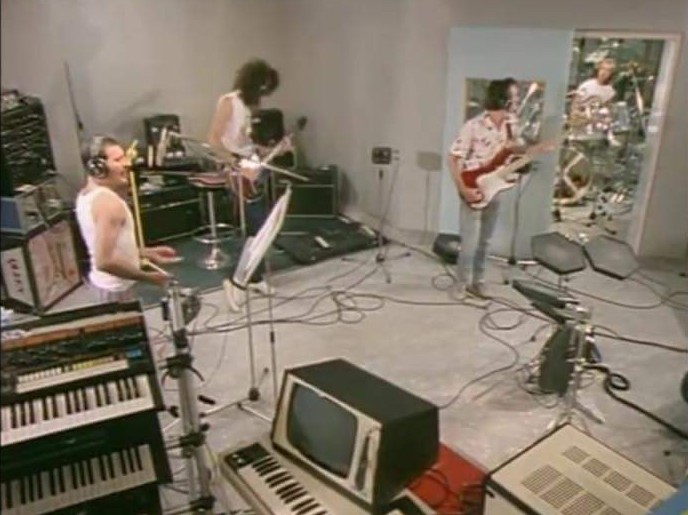
Equipment used on the “A KIND OF MAGIC” album largely differed again from what was played on stage. On the record, drums were Ludwig, additional synths were used (Yamaha DX7, Fairlight CMI-III and Kurzweil K-250) and a Yamaha C-7B piano was used in Munich (Friends Will Be Friends). LinnDrum machines were recorded, sometimes even completely replacing Taylor (One Year of Love). Deacon used his 1981 Telecaster on some songs of the album too for the rhythm part.

The solo projects of the members and the choose of migrate the music in a more commercial and pop direction will bring more flat music pieces even if some masterworks are still recorded in these years.
During this period, Queen decide to add some members (Morgan Fisher, Fred Mandel, Spike Edney) during live performances in order to be helped to create more complex musical pieces, similar to studio recordings with overdubs. The condenser mics used for vocal parts were AKG 414.
• Period IV (1989–1995); including the albums “THE MIRACLE”, “INNUENDO”, “MADE IN HEAVEN”. In this last section, studio works have a long development and songs are again full of originality and sensibility closing ideally the path started in 1973. No one of the songs from this period has ever been performed live by Queen with the original members. The songs are complex and their structure permits the use of a growing number of electronic instruments and modern devices in studio sessions.
A growing number of synths is used (including the Korg M1) especially in the “MADE IN HEAVEN” album, and studio effects are at a new level of production. The synths permit with their polyphony a layered sound and some pads that are noticeable in many songs (Untitled), such as the use of arpeggiators (The Miracle).
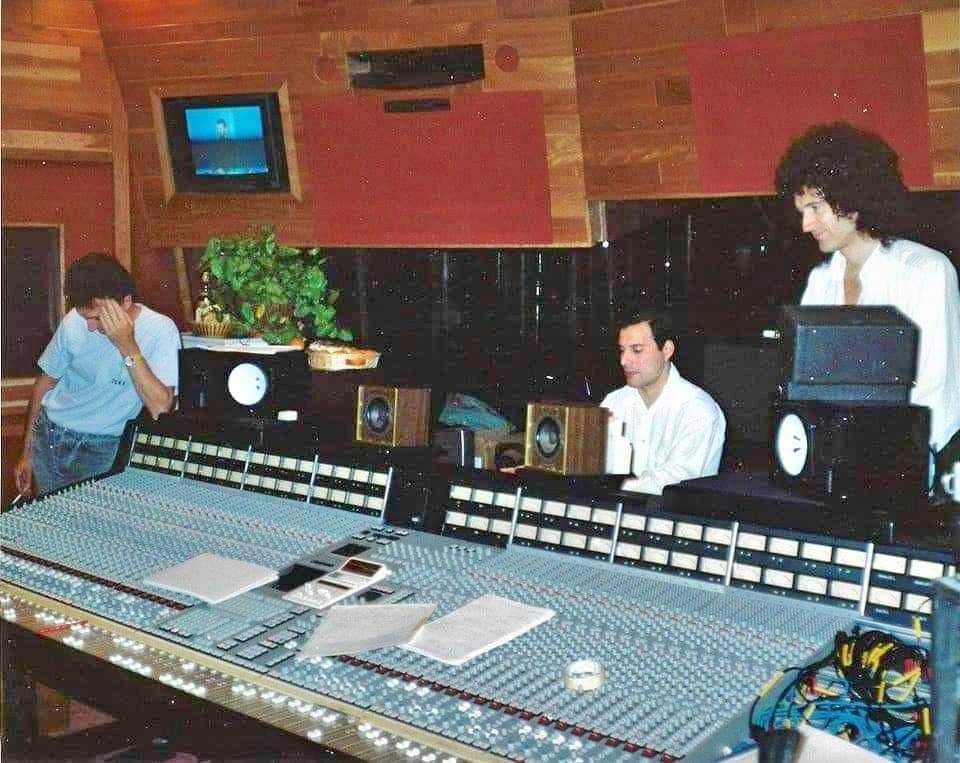
Differences between studio recordings and live performances
Queen on stage used a rock-standard primary line-up (drum kit, bass, piano and electric guitar) with a spare guitar as a backup and some selective equipment which was employed only for brief parts of the show. Each member played a single instrument during a show with few remarkable exceptions. Their concerts favoured the visual aspect (lights, costumes, sets) just as much as the musical, which is why they never tried to replicate the studio versions, including the use of different instruments to those they had recorded the songs with; the singer is for most of the show Mercury even for songs he didn’t sing in studio versions.
Drums
Out of all the instruments, drums are the most difficult ones to document because sets could change frequently. Taylor had dozens of items and his roadie assembled the kit based on his specifications, but it also varied depending on the venue, the set-list and the general mood of the moment. Often during the tours and from tour to tour, the drummer changed the snare.

The American company Ludwig, which was very popular between English drummers (Ringo Starr, John Bonham), was the favourite brand and it has been used for most of the Queen tours and record sessions. From late 1974 to early 1976 he putted into the set an Italian brand, Hollywood Meazzi, tom with two different wraps. He liked to mix lot of brands, for instance the tom holder on the bass drum was firstly Ludwig, from October 1974 Premier, then Rogers from 1976 (including the Hi-Hat stand until 1986); in 1981 the tom holder on bass returned to be a Ludwig.
He changed the whole kit and hardware into Yamaha Drums in 1986. Taylor added a single tom on left side (1976), and the holder and the block on the Ludwig wooden shell was Rogers until 1984. In 1978, he started to use a Slingerland kit mixed with a Ludwig bass drum as “front of stage” kit for some songs. After the Yamaha kit of the Magic
Tour he went back to Ludwig, to record the “INNUENDO” album. For “MADE IN HEAVEN” the drum kit was the Australian brand Sleishman. For cymbals as well he changed type and order from venue to venue mixing Zildjian and Paiste until 1982; he’s been exclusive to Zildjian from 1984 onwards. Next to his drum set, he used a pair of timpani from late 1978 to late 1982 and, of course, from late 1975 to late 1982 he also had a gong to be played seldom (Bohemian Rhapsody, White Man and Ogre Battle).

At the end of the 70’s Taylor started to use (both in studio and live) some of the first electronic drums , this to have a new sound and to experiment new territories, similar to what is happening in the same period with synths. In fact in 1977 he played live in tour the Syndrum Pollard Quad system.
In 1982 he switched to Simmons SDS 5 drum kit pads, then to the SDS 7 model. For Queen’s last tour, he preferred the smaller Roland Pad 8 Octapad.
In studio Queen used the Linn LM-1 Drum Machine for specific sounds into their songs (1982).
Guitars
May is most famous because he made his own guitar, known as the “Red Special” . The secret of its peculiar sound (beside the huge use of overdubs in studio sessions) is the contemporaneous use of 3 distinctive amplifiers to have different effects in the same time and a wider stereo image. The use of delay (the analogue Echoplex in the first years, then digital models) and echo effects during live shows helped to create a multipart rich in harmonic details and with counterpoint elements.

The amplifiers chosen by May were the tube model Vox AC-30 (inspired by Rory Gallagher), and a treble booster pedal helped to create a layered sound similar to an orchestra and its elements (most noticeable in Good Company or Procession). That is the guitar used for most concerts and recording sessions, but not the only one. He always had spare instruments in case he had problems with the main one.
During the years, his main electric spares have been:
• Late 1973 – Early 1974: Fender Pre-CBS Stratocaster, black
• Late 1974 – Early 1975: Gibson Les Paul Deluxe, orange sunburst
• Late 1975 – Summer 1982: Birch Bespoke, a natural finish replica of the Red Special
• Late 1982: Gibson Flying V, orange sunburst
• 1984 – 1993: Guild BHM, which was an almost identical replica of the Red Special
• 1998 – 2006: Fryer bespoke replicas of the Red Special
• 2008 onwards: BM (Brian May’s own company) replicas of the Red Special
Besides those, it is worth noting that May used some other electric guitars for some specific cases, the most famous being the 1978 Fender Telecaster with which he played in Crazy Little Thing Called Love in the 1979-1986 era.
There was a short acoustic set in the middle of concerts (as it was usual for rock bands since the 70’s), as a way to divide the show and give the audience the necessary transition from the excitement and emotion of the opening songs to the end of the gig, which included some of the best-known songs: Queen always had a precise dramaturgical sequence for the show and each song had a specific position in the set list.
This acoustic set was introduced in summer 1976 and at first consisted of only ‘39, but eventually other songs were added such as Dreamer’s Ball (late ‘78 to early ‘79), the cover of Imagine (occasionally in late 1980), Life Is Real (1982) and, Love of My Life (first played in late 1977; the piano and harp of studio version leave place to the acoustic guitar). For Crazy Little Thing Called Love, May began the song on acoustic, then switched to Telecaster and then ended it on the Red Special. He played Is This the World We Created…? (and the other covers they did in 1986) on a guitar that looks and sounds like a classical acoustic but is actually electric (classical electric).

May’s main acoustic guitars on stage have been:
• 1976: Martin D-18 six-string
• 1977 – 1993: Ovation Pacemaker 1615 twelve-string
• 1998: Collings six-string
• 2005 onwards: Guild F-512 twelve-string
The Martin D-35 with serial number 357736 is from Freddie personal collection. In natural finish, spruce top with rosewood three-piece back and sides, bound body and sound hole, mahogany neck, rosewood headplate, twenty fret bound ebony fingerboard with dot inlays, chrome Grover Rotomatic tuners, ebony pin bridge with four dot inlays, black pickguard and endpin jack socket. This guitar has been modified with an internal pickup system and two of the four dot inlays added on the bridge appear to correspond with the locations of the installed pickups .
This is believed to be the guitar purchased for Freddie Mercury by his roadie Peter Hince in 1977, as he wanted a “good guitar” to have at home, although it is not in its original case. It appears that Freddie and Brian May were both keen on this model of Martin as Brian is photographed playing a similar Martin D-35 on stage in 1976 during Queen’s appearance at Hyde Park, London, 28 September, 1976 and during the “News Of The World tour” of North America, November-December, 1976.
The fact that Freddie’s Martin D-35 has an interior pickup system installed suggests it may have been used on stage at some point in its life.
Electric bass guitars
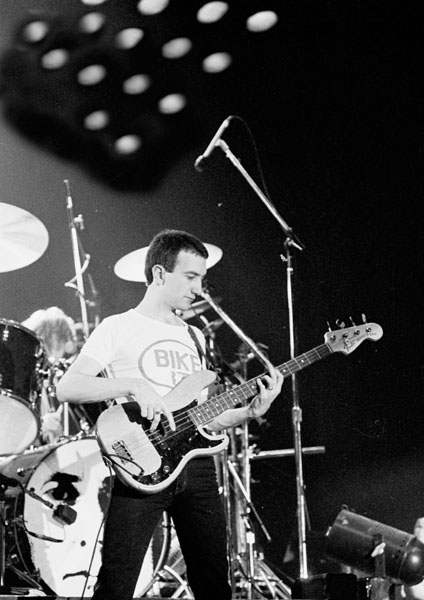
The sound of the electric bass is peculiar in a rock band since it merges the rhythmic section with the melodic lines. Deacon was, for most of his professional career, a Fender Precision bassist. John Deacon had acquired a Fender Precision by his second year at university (1970). The second instrument of that kind one is believed to have been purchased by Queen’s record company in 1974, presumably so that he had a spare for live use. Other sources say that the company gave him a 1965 sunburst model already in 1972, and by late 1974 he had another one, which was made in 1968.
The only slight difference is on their logos: the 1965 model has a grey logo, the 1968 model has a black logo. He used both of them interchangeably for most of the 70’s, and then mostly the 1968 model from then on.
Those basses underwent several changes on their finish: in summer 1975, Deacon stripped off his 1965 model and left it natural, one year later he did the same with the 1968 model, and by the time the Magic tour began in June 1986 he had his 1968 bass refurbished and painted black. From 1972 to early 1977, he took those two Precision’s on the road.
He also had other Fender Precision’s throughout the years:
• Fretless (unknown model): used for 1-2 songs in 1977-1979
• 1950s Precision: bought by John during the USA tour at the end of 1978, as recalled in this inteview by David Lawrenson with John Deacon published in the September 1979 issue of International Musician and Recording World:
Also on the last American tour I picked up a very old Fender, one of the really early ones with the small straight pickup which is quite nice and I’m just getting used to it. I used it when we were doing some recording in Germany on one track, but I still ended up coming back to my other Precisions.
• Special 1981: used for Under Pressure between 1981 and 1985
• Elite (either 1983 or 1984): used as spare in 1984-1986 and Freddie Mercury Tribute
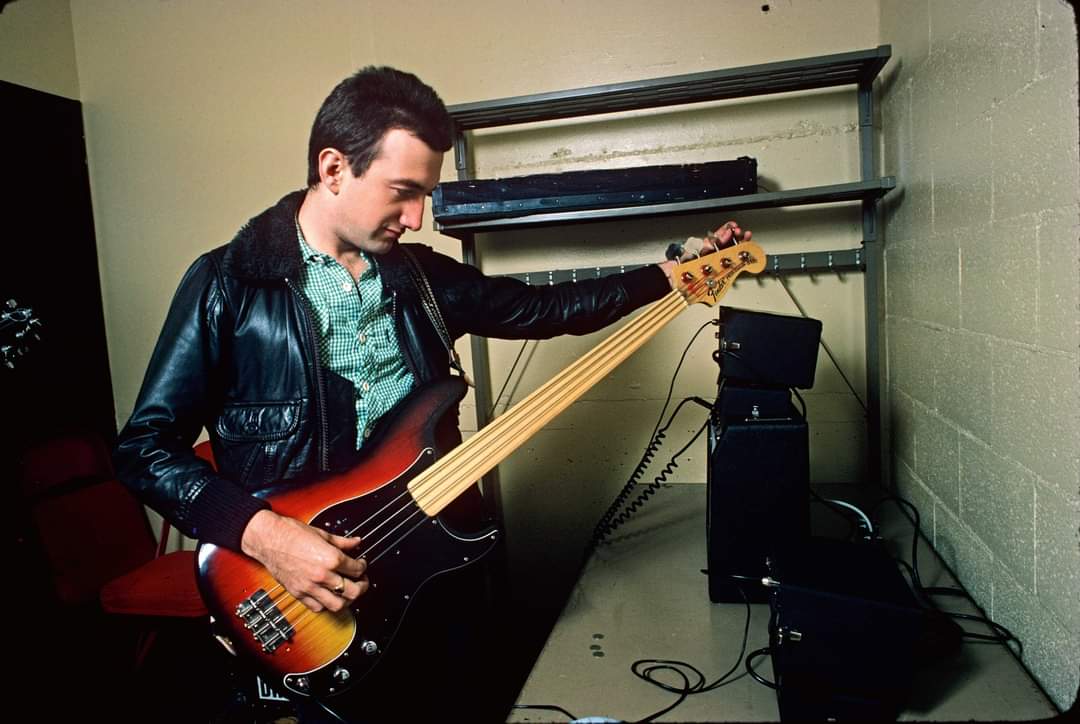
Non-Fender basses included:
• Rickenbacker 4001: used in 1971-1972 (before he got his first Fender)
• Music Man Stingray: main bass for most of early 1977, then used on Another One Bites The Dust
• Kramer DMZ: spare in 1980-1982
• Giffin Bespoke: spare at the Freddie Mercury Tribute concert in 1992
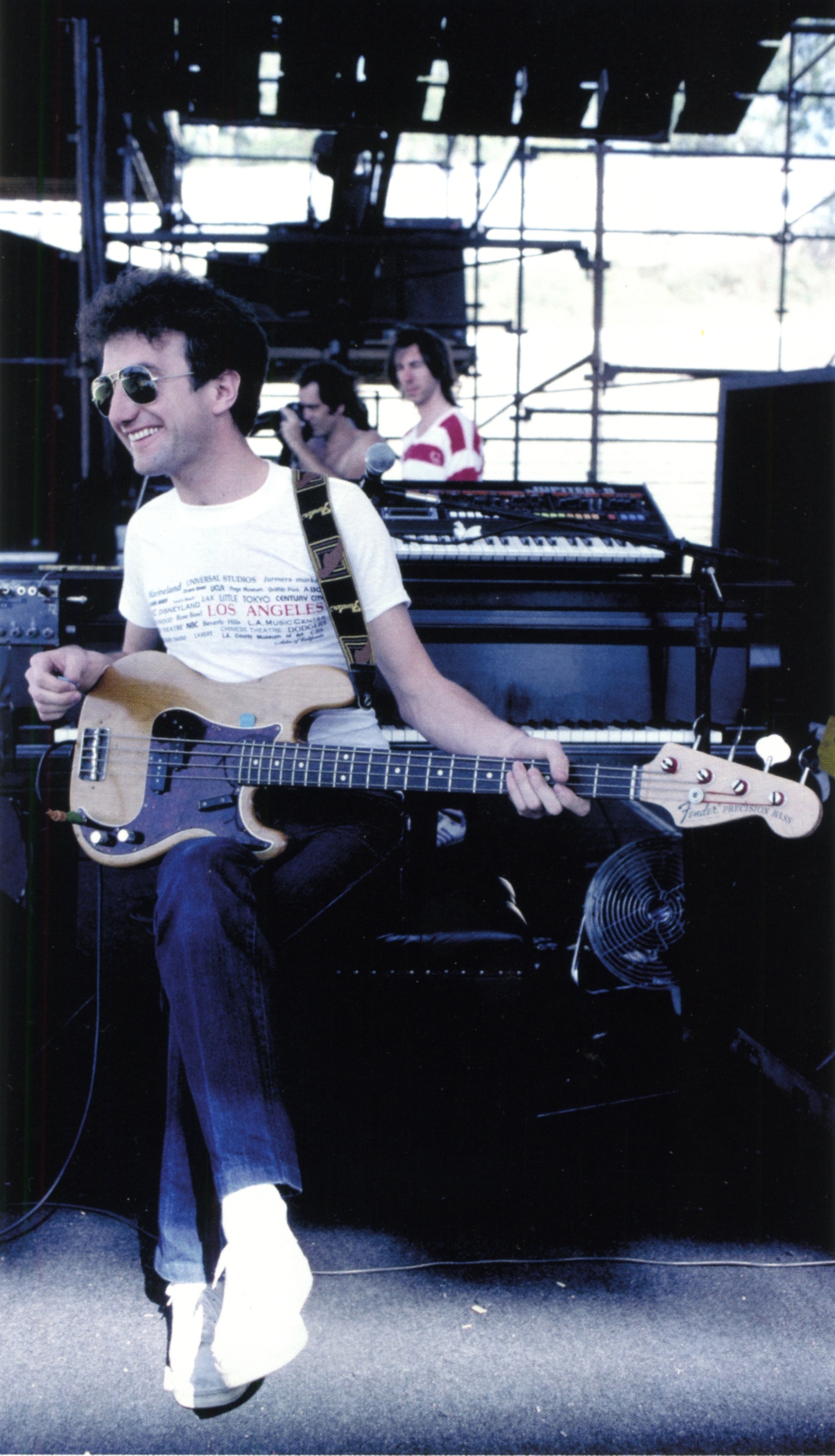
Piano, Keyboards and Synths
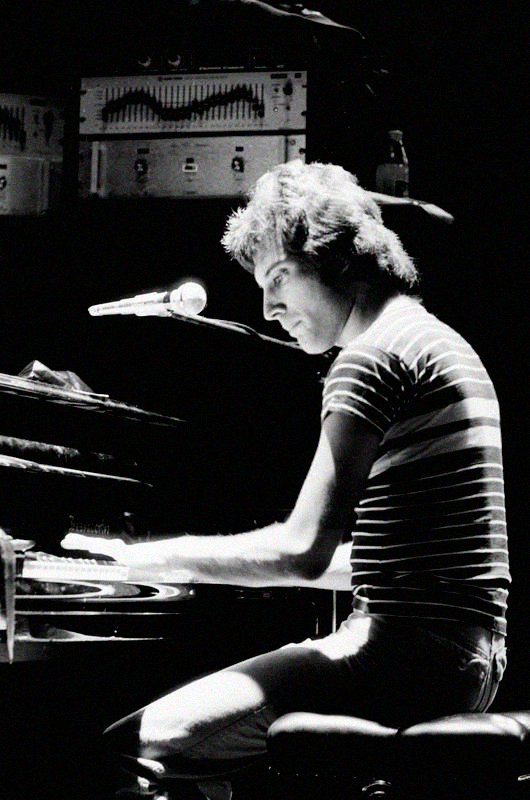
Although Mercury was a great rock pianist, the original intent of Queen was to be a trio, with the piano only used occasionally in the studio. When Seven Seas of Rhye was released, the need to promote it, and the fact it was piano based, resulted in the band introducing that instrument to their equipment from 1974 onwards. It was optional at first since they didn’t own one for live (if the venue had no piano, they simply dropped the song from the set-list), but by the time they began their 1974 tour it became mandatory, as they were promoting the Killer Queen / Flick of the Wrist single and piano was also used for White Queen as well (even if the studio version omits it).
Regarding grand pianos, since the band didn’t own one in the early days, they had to ask local promoters and concert organisers to provide Mercury with a piano. For special occasions such as the Christmas Eve concert in 1975 at the Hammersmith Odeon, or the 18th September 1976 massive gig at Hyde Park, Mercury hired a 7 ft 2 in white Bechstein (possibly a IV model made in the late 19th century), but otherwise he just played what he was given.
That practice ended when he bought a Steinway 8 ft 11.75 in concert grand (1972 model made in New York), which he used for every single concert since he had it. The piano was tuned before and after sound check, and its amplification was based around Helpinstill pickups, instead of just placing two microphones on top of the piano: that was a good solution for concerts as it reduced feedback, since the pick-ups transmitted the sound by sensing strings’ vibrations instead of capturing external stimuli.

At his home in Garden Lodge, London, Freddie Mercury used to have two grand pianos, one in a black lacquered and chinoiserie case by John Broadwood & Sons, no. 253218 (circa 1934) and a black Yamaha G2 (1973). They have been both sold by Sotheby’s in 2023 during the big auctions following the Freddie Mercury: A World of His Own exhibitions. They have never been used during a recording of a song, but they still remain important since they inspired many works and the have been played at home for several years.
Regarding the first one, Freddie acquired this piano in New York in the Spring of 1977. The distinctive use of Japanning (which adds a heavy lacquer finish) on Freddie’s Broadwood also links to a history of fine decoration on the firm’s pianos, which was usually in step with the prevailing aesthetic trends in furniture design. By the 1920s, Broadwood had incorporated significant revivalist and historicist elements into its decoration, harnessing the general uptake in interest for English antiques among collectors and decorators of the inter-war period. Some Broadwood pianos of the period feature the fluting and swags that are the signature of Robert Adam’s late 18th-century neoclassicism.
The whimsical Japanned decoration on this piece imitates prestigious Japanese lacquer of late 17th- and early 18thcentury furniture: something craftsman had done ever since encountering this beguiling material as the craze for all things Chinoiserie swept across 18th-century Europe.
This piano’s Japanned decoration is highly rare for a Broadwood piece and Freddie is likely to have chosen the highly decorative item to complement his suite of furniture by S. Hille & Co. from a similar period.


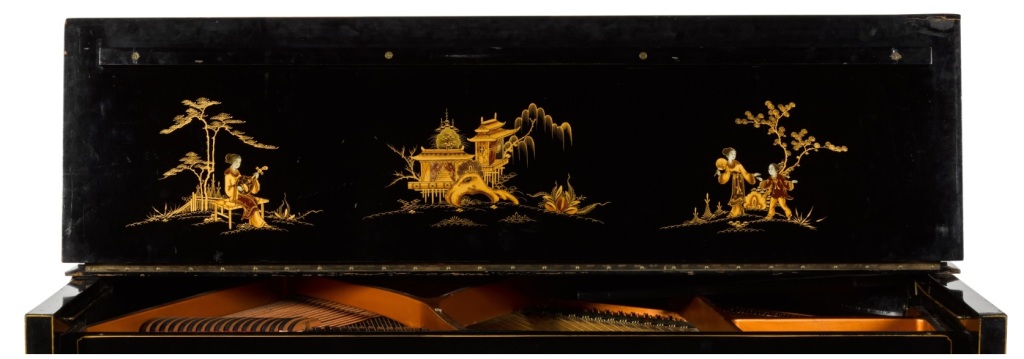

The main piano from Freddie’s personal collection, sold by Sotheby’s in 2023, is a Yamaha G2 from 1973. The Yamaha G2 was a baby grand, one of the small number of Yamaha pianos on the market at the time.
With its bright, ebonised polyester case, square tapered legs, brass castors and faux-ivory keys, the G2 was built at Yamaha’s flagship factory in Hamamatsu, Japan. “Yamaha had designed this piano as direct competition to a Steinway, but at a lower price point,” says classical pianist Joseph Fleetwood. “And because of their modern production techniques, they built a really good instrument.”
Freddie loved its easy keyboard action, plangent sound and elegant look, keeping it close at hand for the rest of his life. The new piano quickly proved its worth. In the spring and summer of 1975 Freddie was working on his most ambitious song yet, Bohemian Rhapsody, and the rich sound of his new instrument surely encouraged Freddie to embrace greater grandeur and range when working on his masterpiece.
Shortly after the song’s release, the piano moved with Freddie and Mary to their new flat in Stafford Terrace, Kensington. A few months later, when Mary moved to Phillimore Gardens in Holland Park, Freddie relocated the Yamaha to her flat, where he would visit, concentrating on his playing and composing. After briefly returning to Stafford Terrace, it made its final move to Garden Lodge in 1986/87, where it stayed until March 2023.
When friends and collaborators visited, the piano became a hub of activity, around which everything from party singsongs to more formal performances took place. The key collaborator in Freddie’s final years (and a frequent player of the piano) was music producer, composer and multi-instrumentalist Mike Moran, who first met Freddie in 1986 and would go on to co-produce The Great Pretender with Queen’s Montreux Studios-era producer and engineer David Richards.
Their collaboration thrived, with Freddie inviting him to co-produce “Barcelona”. This album, which united Freddie with his heroine, legendary soprano Monserrat Caballé, had its origins in a long and memorable evening at Garden Lodge in March 1987 when the “super diva” and the “diva of rock and roll” played an impromptu concert at the Yamaha until 2.30 am.
Besides piano, there were other keyboards used by Queen during concerts. It all began when Queen released Flash’s Theme as a single in late 1980. They introduced the song to the set on 6th December and its very first rendition had no keyboards as May played it all on guitar. From the next concert onwards, however, it was moved to keyboards for the first half of the song: he played piano and then switched to synth for the main hook of the song.


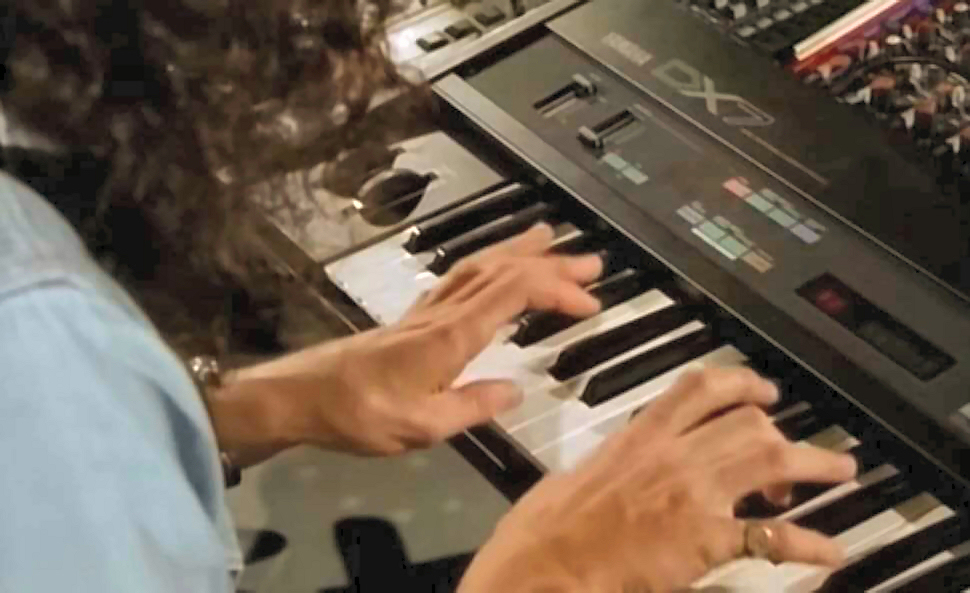
The harpsichord that can be heard in the studio version of The Fairy Feller’s Master Stroke is obviously replaced live with a grand piano and even songs (such as Save me or Teo Torriatte) that in studio had two distinctive pianos layered, during concerts were performed in a simplified version with only one keyboard; the electric piano of You’re My Best Friend was replaced live with a standard acoustic grand piano. The organ was never played live despite some songs (Liar, Now I’m Here) feature that instrument in studio sessions, but its use was not as a primary instrument so it could be easily omitted.
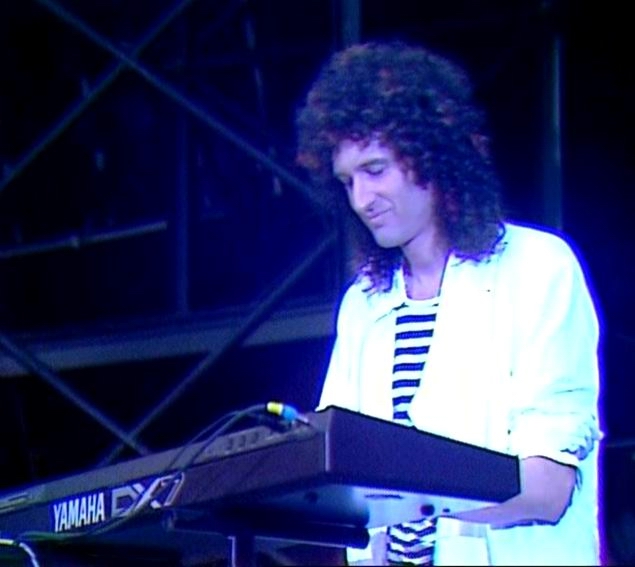
The original orchestral section of Who Wants To Live Forever were recreated live with a Yamaha DX7 (organ section) and Kurzweil K-250 (strings section).
The main keyboards used on tour were:
• Oberheim OB-X synthesiser (late 1980 to early 1981)
• Oberheim OB-Xa synthesiser (1982 – 1985)
• Roland Jupiter 8 synthesiser (late 1981 to 1992)
• Roland VP-330 vocoder (1984 – 1986)
• Yamaha CP-80 electric grand piano (1984-1985)
• Yamaha DX-7 synthesiser (1986 – 1992)
• E-MU Emulator II+ (1986)

Conclusions
The main aim of the paper was to analyze not only the instruments used by the band in studio or live sessions, but even to give to that choice a practical and thoughtful reason. Besides the complex songs’ structure of the first periods, the richness of the band can then be traced in their decision to make each piece of music unique using a distinctive “sound”. And the choice of several different instruments was a natural step in this direction: in a way the four members wanted to show their potential in an acoustic way; on the other way the choice was lead by real dramaturgic reasons.
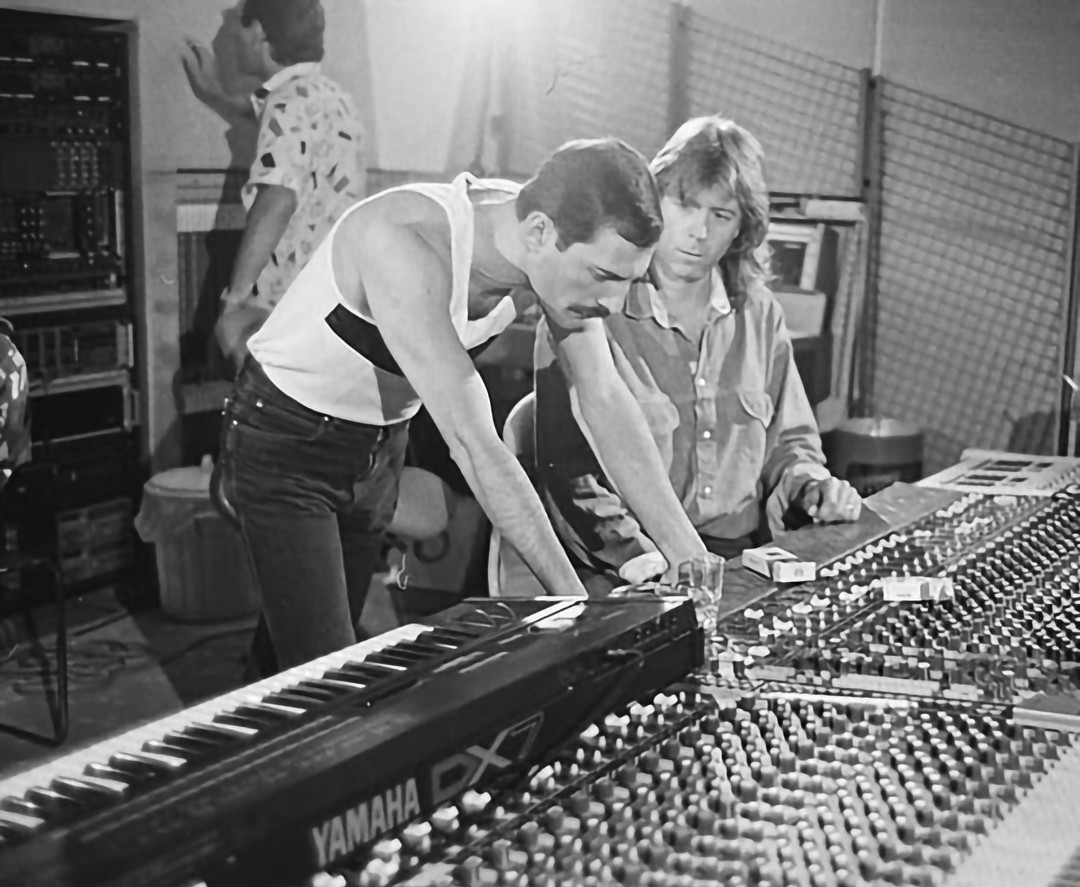
The development of electronic devices helped then the lack of creativity of some years, and then it greatly supported the studio recordings in the following years. But Queen as a group never lose their freedom and curiosity when looking for new sounds and instruments to be used in their album or during live shows, and this helps to create their richness.

List of particular instruments used in songs and “Albums”
Percussions, drum machines and specific drums
– Tambourine: Keep Yourself Alive, Liar, Seven Seas Of Rhye, ‘39, Teo Torriatte, Don’t Stop Me Now, Dragon Attack, One Year Of Love, My Baby Does Me
– Cowbell: Liar, Great King Rat, Who Needs You, Stealin’
– Castanets: The Fairy Feller’s Master Stroke
– Bells: The March Of The Black Queen
– Marimba: The Loser In The End
– Maracas: Who Needs You, More Of That Jazz, Put Out The Fire
– Triangle: Killer Queen, Good Old Fashioned Lover Boy, Don’t Stop Me Now
– Gong: Ogre Battle, Bohemian Rhapsody, White Man, Teo Torriatte
– Timpani: Bohemian Rhapsody, God Save The Queen, Was It All Worth It, Who Wants To Live Forever, In The Death Cell, Escape From The Swamp, Crash Dive On Mingo City
– Woodblocks: Good Old Fashioned Lover Boy
– Hawk-bell: Mustapha
– Vibraslap: Hijack My Heart, Scandal, Party
– Bongo: Mad The Swine
– Drum Machine Linn LM-1 & LinnDrum: “HOT SPACE”, “THE WORKS”
– Epad Simmons
– Pollard Syndrum
Guitars and bass guitars
– Gibson Chet Atkins CE: I Want It All, Innuendo, Is this The World We Created…? (Live), Who Wants To Live Forever (Live)
– Nylon-String Acoustic Guitar: Who Needs You
– 12 String Electric Guitar: Under Pressure
– Flamenco Guitar: Innuendo (played by Stewe Howe)
– Shletone Banjo Ukulele: Bring Back That Leroy Brown
– Ukulele: Good Company
– Fretless Bass: ‘39 (Live), My Melancholy Blues (Live)
– Burns Double Six 12-String: Long Away
– Skull & Bones custom guitar: It’s A Hard Life (videoclip)
– Ovation guitar: Is This The World We Created…?
Strings
– Double-Bass: Bring Back That Leroy Brown, Death On Two Legs (Dedicated To…), ‘39
– Toy Koto: The Prophet’s Song
– Orchestral Harp: Love Of My Life
– Full orchestra: “FLASH GORDON”, Who Wants To Live Forever
Keyboards
– Organ: Liar, Now I’m Here, Under Pressure, The Wedding March, Breakthru
– Goff Harpsichord: The Fairy Feller’s Master Stroke
– Electric Piano: You’re my Best Friend, Sail Away Sweet Sister, Cool Cat
– Kawai EP 308 Electric Grand Piano: Radio Ga Ga (Live), A Kind Of Magic (Live)
– Upright Piano: Bring Back That Leroy Brown, Killer Queen, Seaside Rendezvous
– Plastic Piano: Teo Torriatte
– Harmonium: Teo Torriatte
– Jangle Piano: Killer Queen
– Hohner Clavinet: Cool Cat
Other instruments
– Saxophone: Action This Day (played by Dino Solera), One Year Of Love (played by Steve Gregory)
– Horns: Staying Power (played by Arif Mardin)
– Vocoder Roland VP-330: Radio Ga Ga, Machines
Synthesizers
– Dubreq Stylophone: The Seven Seas Of Rhye
– Oberheim OB-X & OB-Xa: “THE GAME”, “FLASH GORDON”
– Oberheim OB-8: Radio Ga Ga, Machines
– Roland Jupiter 8: “HOT SPACE”, I Want To Break Free, Radio Ga Ga
– Roland JD-800
– Roland D50: Breakthru, Was It All Worth It, The Miracle, I Want It All, The Invisible Man
– Yamaha DX7, DX7 IID: Who Wants To Live Forever, Princes Of The Universe, One Year Of Love, My Baby Does Me
– Fairlight CMI-II: I Want To Break Free, Machines (Queen were one of only two artists to own a Series IIx Fairlight CMI that had a hard disk drive installed. It was a very rare upgrade and the other one was owned by Andy Richards, legendary Fairlight programmer and session keyboardist)
– Kurzweil K-250: Who Wants To Live Forever
– Korg M1: Innuendo, The Show Must Go On, I’m Going Slightly Mad, Don’t Try So Hard, Bijou
– E-mu Morpheus Z-Plane: Untitled
– Ensoniq ASR10
– EMU Emulator II: Who Wants To Live Forever
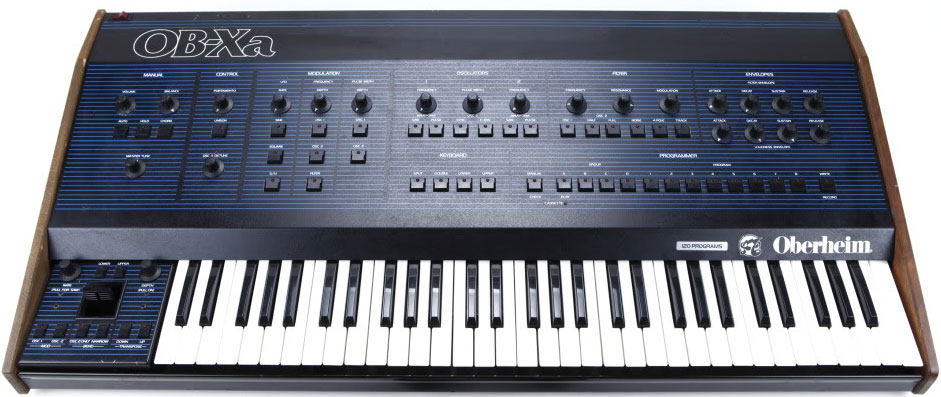
© Nicola Bizzo
This article took inspiration and infos from the article “Instruments on Queen and solo tours” at this address:
http://www.queenconcerts.com/instruments.html
For the Drum section may info were submitted by Di Nardo, Dario. “The Roger Meddow’s Taylor Drum Kits Book”. Torino Di Sangro: (Self-published), 2016
For the instuments list, the original (incomplete) can be found in the section “Special Instruments – Revisited” at the address:
http://forum.queensongs.info/forum.php?mt=4&topicid=265
For the synth part some infos can be found in:
http://www.ageofaudio.com/sotto-la-gonna-dei-queen-i-retroscena-del-gruppo-piu-famoso-del-mondo/
https://www.queenconcerts.com/queenzone/1256324.html
https://gearspace.com/board/so-much-gear-so-little-time/536247-recording-queen-2.html
For the non Red Special guitars futher details can be found here:
https://www.musicradar.com/news/brian-may-talks-nine-queen-guitars-that-are-not-the-Red-Special
For the personal instruments from Freddie’s collection more details can be found at Sotheby’s:
More details regarding the bass guitars:
http://www.deaky.net/rain/musician-e.html
Related Articles
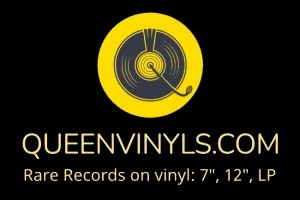

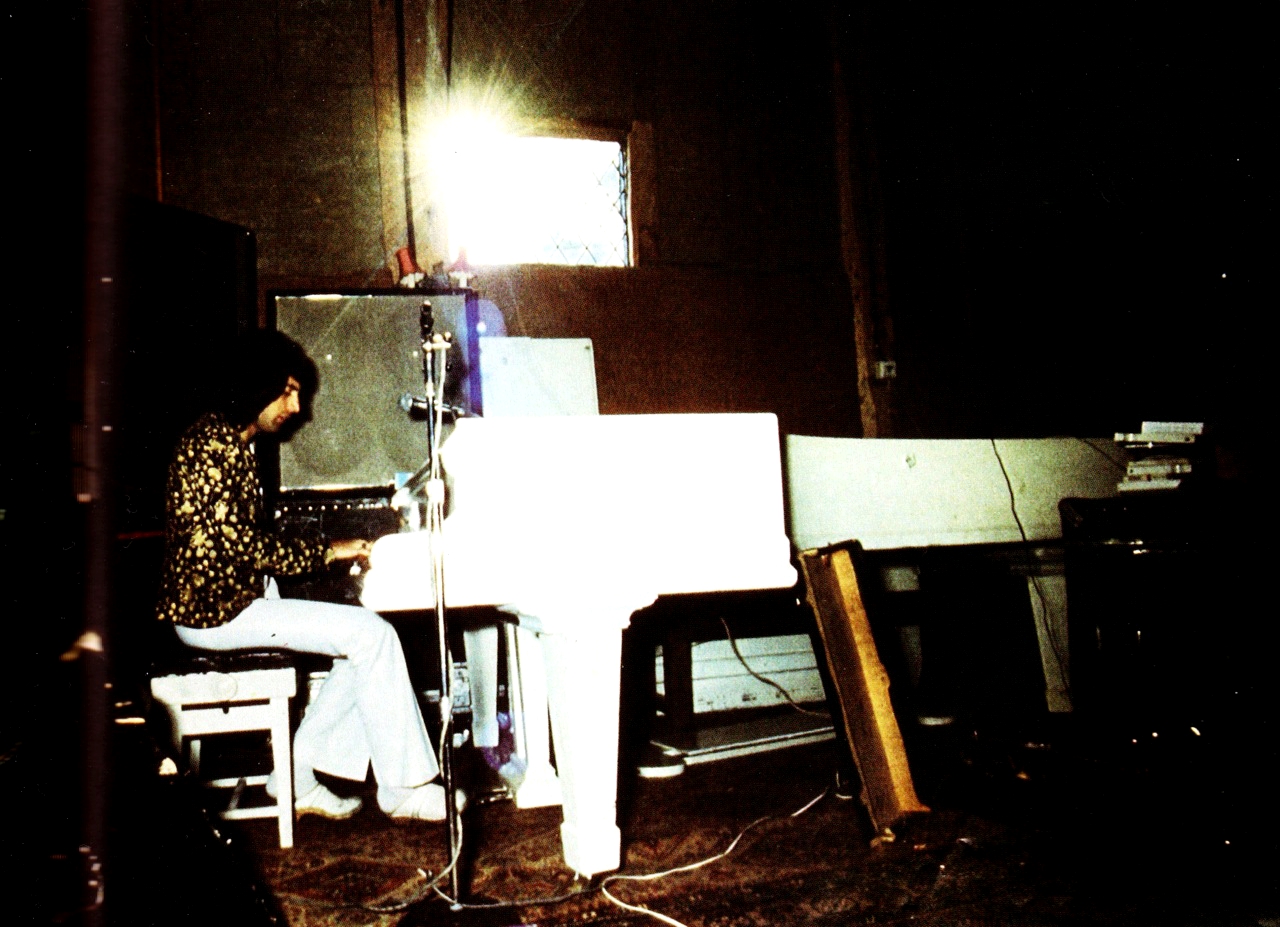
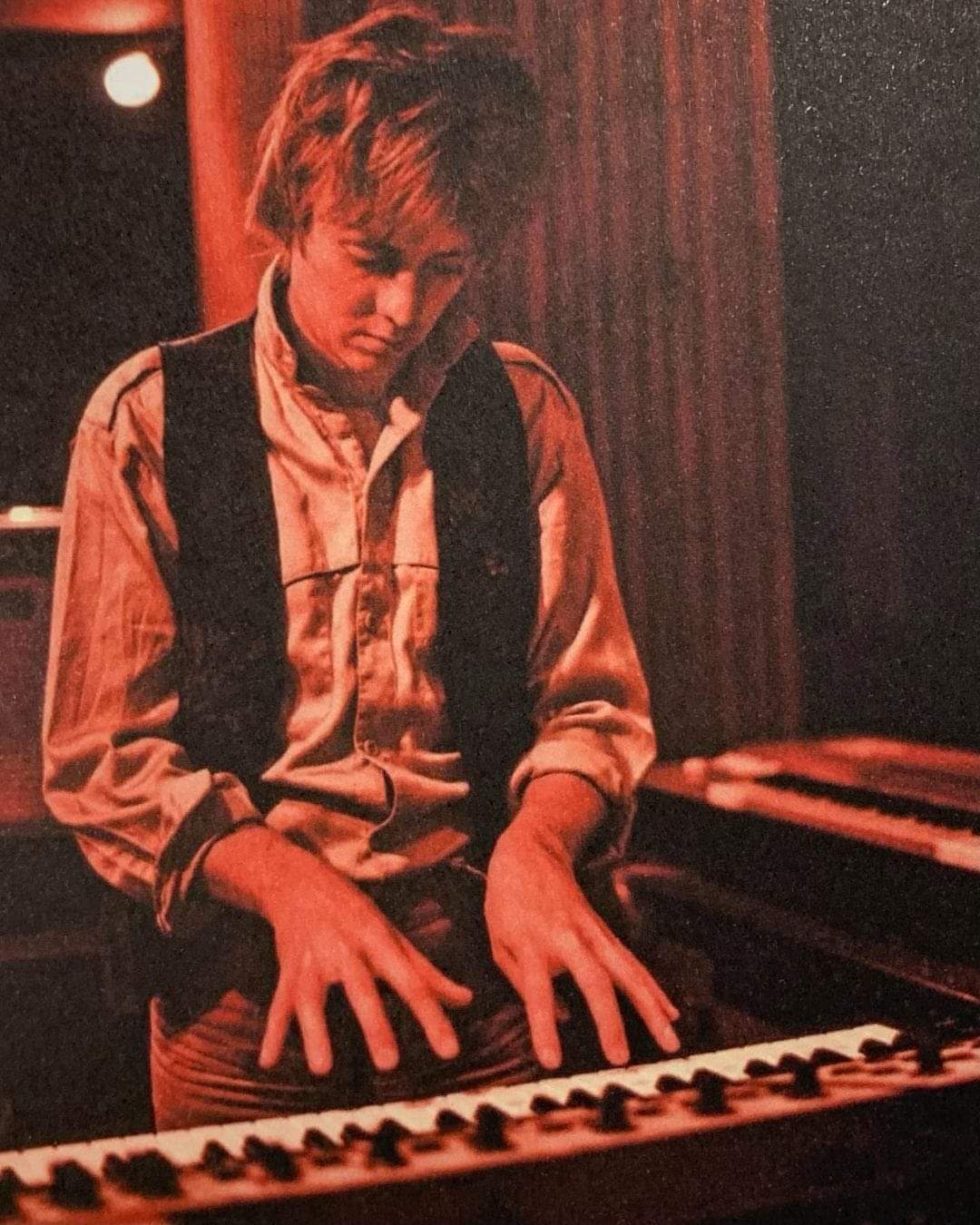
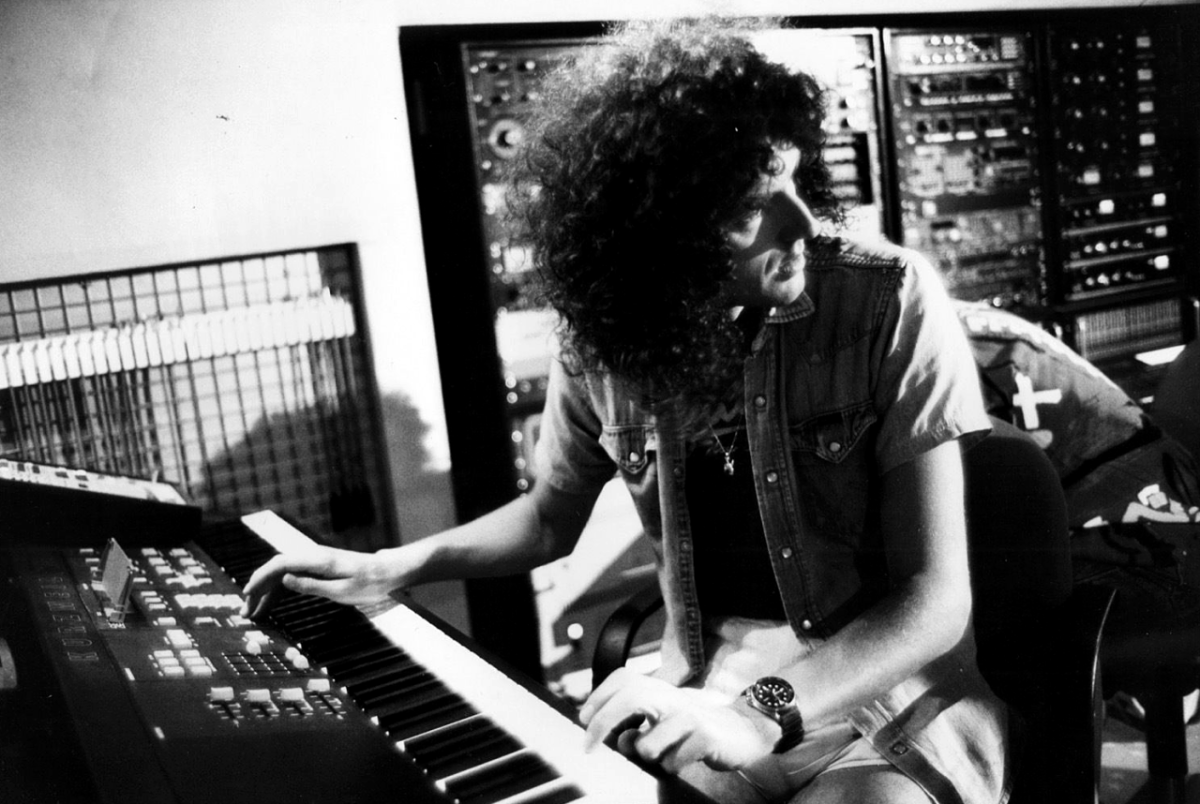


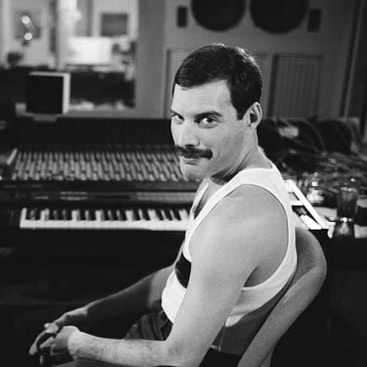
You must be logged in to post a comment.